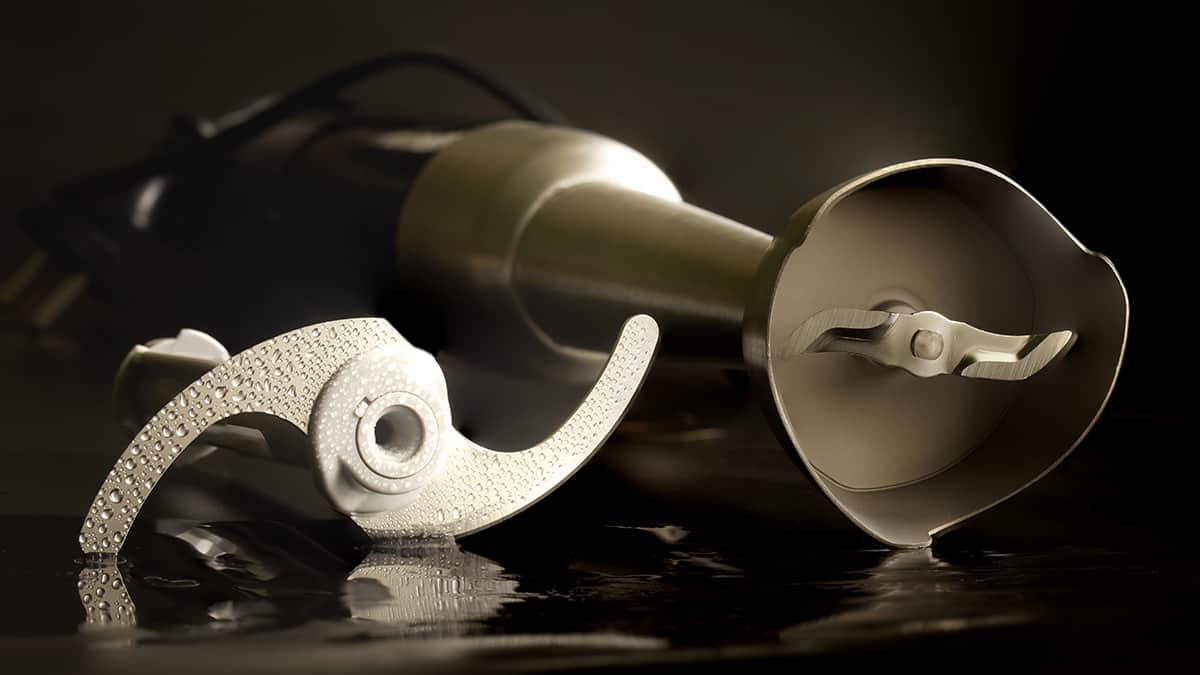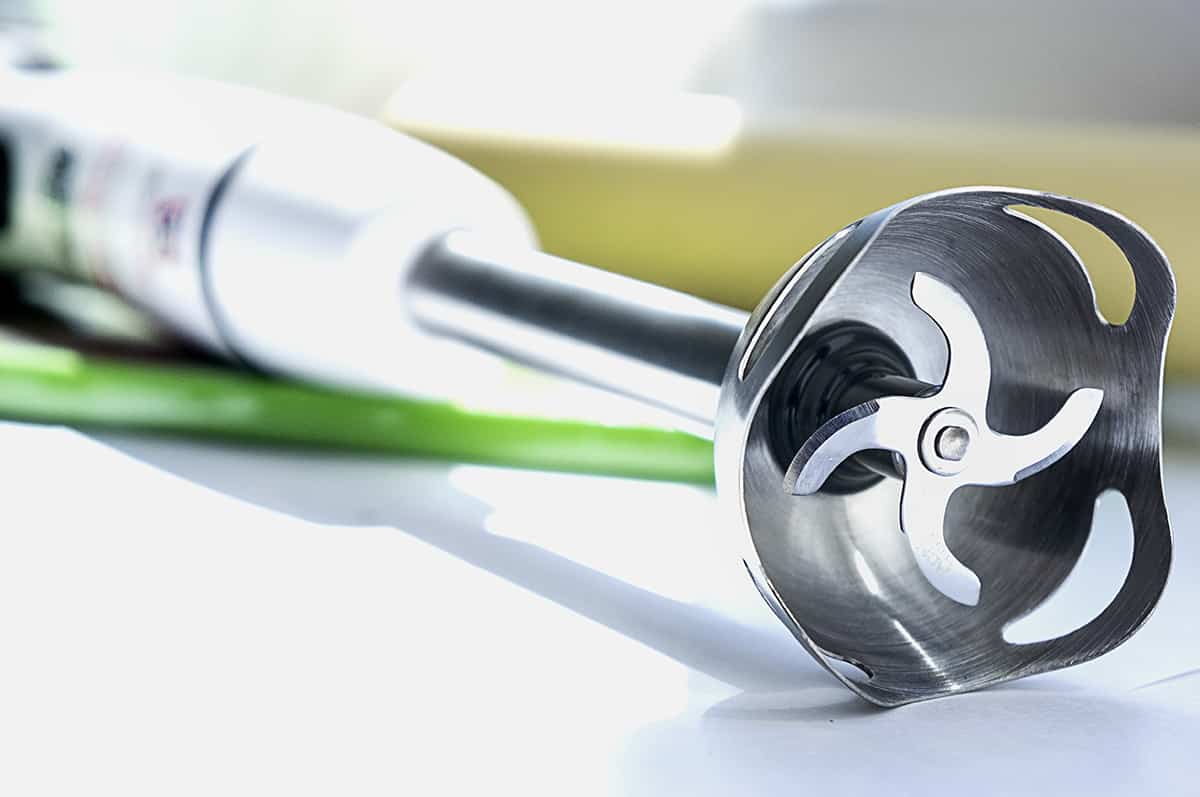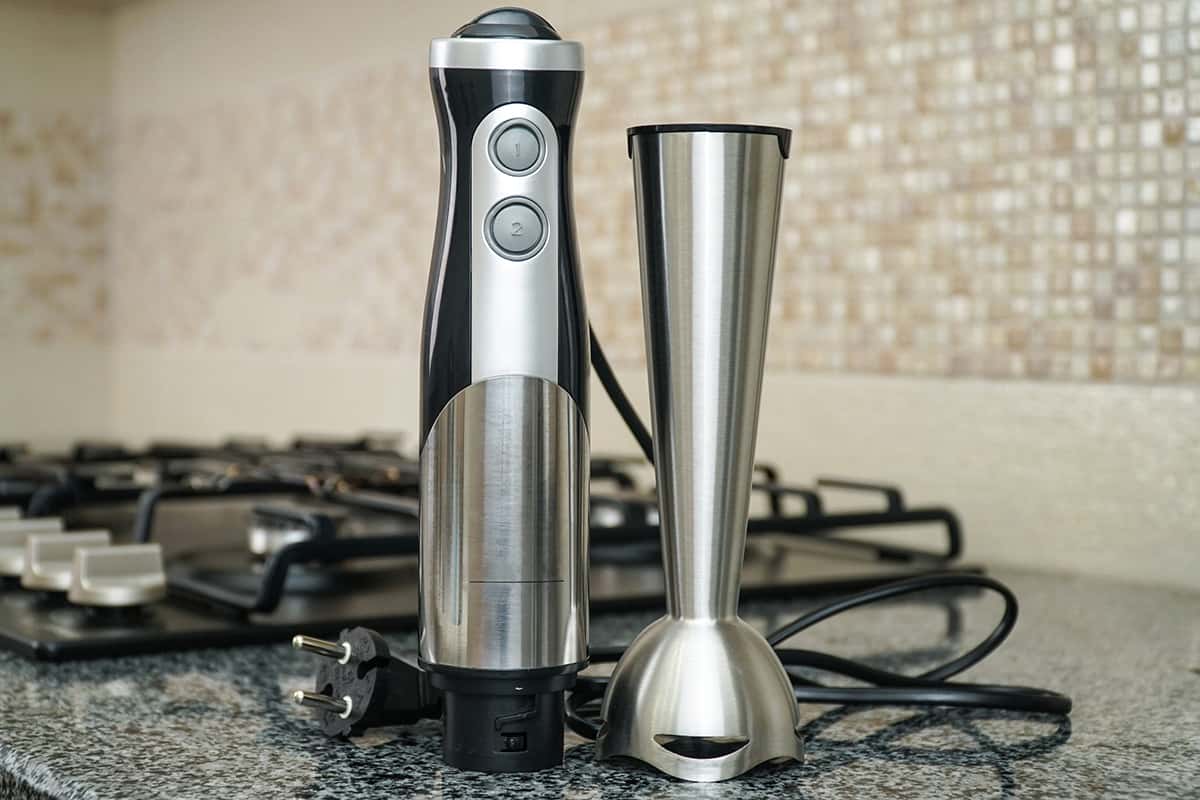An immersion blender is a handy kitchen tool for blending ingredients directly in a pot or bowl rather than transferring the ingredients to a blender.
But after making a smoothie, soup, or salsa with your immersion blender, cleaning the tiny blades can be a chore. So, can you stick an immersion blender in the dishwasher?
The base of an immersion blender should never be inserted into your dishwasher. As for the shaft, while some brands claim that they are safe to wash on the topmost rack of your dishwasher, it’s advised that you wash it by hand.
That said, how do you clean an immersion blender by hand without struggling? I’ll explain how easy it can be to get rid of caked-on debris all over the blender’s blades, as well as explain how different brands advise you wash their immersion blenders.
See also: Can You Wash a Blender in the Dishwasher?
Is an Immersion Blender Dishwasher Safe?
The straightforward answer to this is yes, you can, but you probably shouldn’t do it. Of course, I’m talking about the shaft portion of the immersion blender and not the base that houses the electric motor.
If you take a look at the owner’s manual of your immersion dishwasher, it might say that the shaft—the part that houses the blades—is top-rack safe. Reading this, you might feel confident that the immersion blender’s blades won’t come out worse for wear after a quick wash and rinse cycle, right?
For the most part, this is true. However, there’s a legitimate reason why you shouldn’t do this. The stainless-steel coating on the blades of an immersion blender can wear off, especially when they come in contact with other metal.
In addition, the type of dishwasher soap, especially a highly alkaline detergent, can cause stainless steel to corrode. So, while this soap can be great for pots, pans, and plates, they’re not something you want to introduce to stainless steel.
So, to sum up, an immersion blade can be safe to wash in a dishwasher, but make sure you choose the right detergent and keep the shaft away from other metallic objects. Basically, you’ll have to put in a lot more effort into washing your immersion blender in the dishwasher than you would by handwashing it.
How Do I Wash an Immersion Blender?

Washing an immersion blender is pretty straightforward. In fact, you can get rid of most, if not all, of the gunk stuck between the blades of the immersion blender without even unplugging the device.
Follow these steps to wash your immersion blender without worrying about causing damage to it:
- Fill a tall cup halfway with water and regular dish soap.
- Insert the shaft of your immersion blender into the cup of soapy solution.
- Pulse the power button repeatedly for 30 to 60 seconds, making sure the resulting froth doesn’t make contact with the blender’s base.
- Remove the immersion blender from the cup of water.
- Unplug the immersion blender from the wall outlet.
- Remove the shaft from the base of the blender.
- Rinse the shaft under cold running water until you’ve removed all of the soapy residue.
- Pay the immersion blade’s shaft dry with a clean microfiber cloth, paying extra attention to the blades to ensure that they are as dry as humanly possible.
- Using a slightly moistened paper towel or microfiber cloth, gently wipe down the base of the immersion blender. Make sure to wring the towel to remove as much moisture as possible to prevent moisture from penetrating the blender base’s seams.
- Reattach the shaft to the base and store it in a cool, dry place in your kitchen. Alternatively, you can hang it up on the wall or countertop mount.
Can I Soak an Immersion Blender in Water?

It’s advised that you wash, rinse, and dry your immersion blender immediately after you’re done using it. That way, you reduce the risk of old food remnants drying on the blades and bacteria seeping into the seams of the blender.
However, if, for whatever reason, you left your immersion blender unwashed for hours or days at a time, you can detach the shaft from the base and soak it in a tub, bowl, or tall glass of soapy water. That said, you should only soak it for between 5 and 10 minutes to loosen the residue from the blades. After that, you can follow the steps mentioned in the previous section.
If the old food residue does not loosen from the stainless-steel blades after soaking it for up to 10 minutes, use the rough side of a sponge and carefully scrub the blades until they are perfectly clean. Just make sure to be extremely careful while you do this so that you don’t accidentally cut your finger open. The blades are pretty sharp and are designed to retain their sharpness for months or years at a time.
Alternatively, if you don’t feel like putting your fingers so close to the razor-sharp blades, you can use poke a cotton bud in between the blades to remove the debris.
How to Keep Immersion Blender from Splattering Food?
As great as immersion blenders are, they can be incredibly messy. After all, they are designed to turn solid ingredients into smoothies, shakes, soups, and salsas, so you’re bound to create a mess while running the tool.
However, to reduce or eliminate splattering, you should use your immersion blender in a high-sided bowl or container. That way, any blended ingredients that try to escape the blender’s vortex will end up on the inside walls of the container, not on your kitchen wall or countertops.
This is an important aspect of using an immersion blender since the more splattering there is, the higher the risk of getting gunk all over and possibly inside the blender’s power base. And when this happens, you run the risk of causing the electric motor to break down.
Can I Sharpen the Blades of an Immersion Blender?

Yes, you can. One simple trick you can do is to blend a bowl of eggshells. The shells aren’t too hard that they will damage the blade, but they are hard enough to create tiny sharp ridges along the edge.
Alternatively, you can pick up a set of replacement blades for your immersion blender or replace the shaft entirely, which will include a brand-new set of razor-sharp blades.






